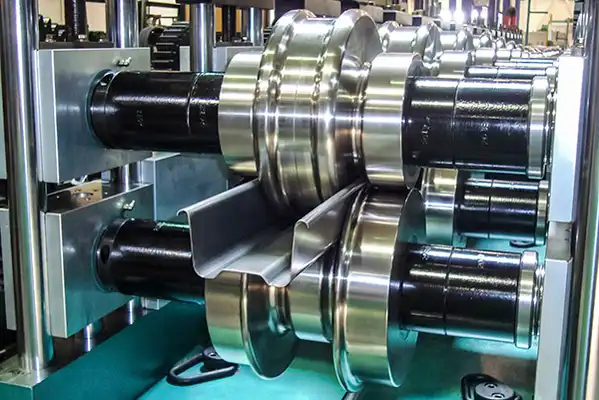Navigation Menu
Contact Us
- Email:
- info@wxavatar.com
- Address:
- Yurong Village, Yuqi Street, Huishan District, Wuxi, China.
Release Date:Jun 22, 2025 Visit:39 Source:Roll Forming Machine Factory
The automotive supply chain is a complex network, constantly seeking ways to optimize operations, reduce lead times, and manage costs effectively. In this intricate system, roll forming technology plays a significant role in enhancing efficiency, offering benefits that ripple throughout the entire supply chain, from raw material to final assembly.

One of the most direct ways roll formers boost efficiency is by enabling leaner inventory management. Because roll forming is a continuous process that can produce parts at high speeds, manufacturers can operate with less raw material inventory on hand. Instead of needing large stocks of pre-cut blanks or stamped parts, they can work directly from coiled metal. This "just-in-time" capability reduces warehousing costs, minimizes capital tied up in inventory, and lowers the risk of obsolescence, which is particularly valuable in an industry with frequent model changes.
Furthermore, roll forming contributes to reduced logistics and transportation costs. The ability to produce long, custom profiles means that fewer individual components might need to be shipped compared to an assembly of multiple stamped parts. Additionally, the process can often integrate secondary operations like punching, notching, or even welding directly into the forming line. This means fewer work-in-progress transfers between different manufacturing stages or external suppliers. Consolidating production steps reduces internal handling and the need for multiple shipments between different facilities, streamlining the flow of materials.
The inherent precision and consistency of roll formed parts also significantly improve efficiency downstream in the supply chain, particularly during assembly. When components are consistently within tight tolerances, they fit together more accurately and with less effort on the assembly line. This reduces assembly time, minimizes rework, and decreases the potential for defects that could lead to costly recalls or warranty claims. Reliable part quality from the roll former ensures a smoother, more predictable assembly process.
Moreover, roll forming's capability to process advanced materials efficiently supports the drive for lighter, more structurally sound vehicles. By shaping high-strength steels and aluminum alloys effectively, roll formers help create components that meet modern performance requirements without compromising production efficiency. This material versatility means automakers can leverage cutting-edge materials without introducing significant manufacturing bottlenecks.
Finally, the high degree of automation possible with modern roll forming lines adds another layer of efficiency. Automated systems reduce the need for manual intervention, increasing throughput, ensuring consistent quality, and allowing for continuous operation. This translates to more reliable output and better adherence to production schedules, which is vital for maintaining a smooth and predictable supply chain.

In essence, by streamlining inventory, reducing logistical complexity, ensuring high part quality, facilitating advanced material use, and leveraging automation, roll formers act as a pivotal technology, significantly improving the overall efficiency and responsiveness of automotive supply chains.